Whether you’re on a city break, a stopover, or setting out on a longer adventure, find out what to do in Oman’s capital with our 3-Day Muscat itinerary.
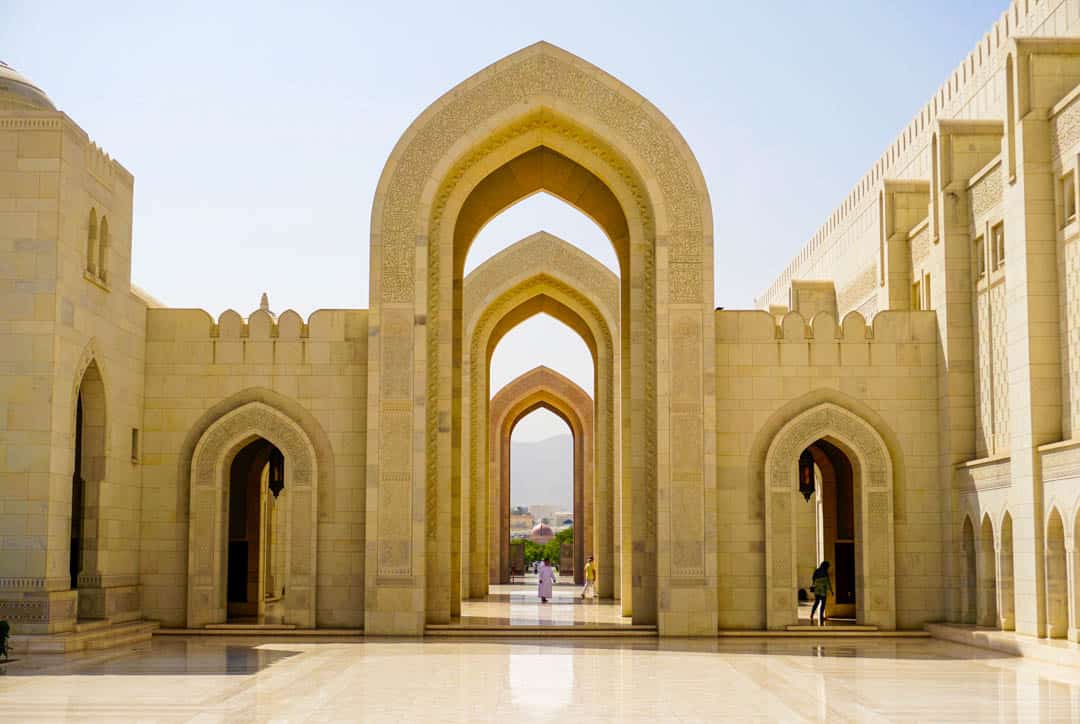
Muscat, the sweeping, mountain-backed capital of Oman, is the unassuming gateway to one of the most beautiful and diverse countries in the Middle East.
Wedged along a 50-kilometre strip of coast between the sparkling Gulf of Oman and the stark brown rises of the Al Hajar mountain range, Muscat is a striking blend of ancient and modern, with a low-key vibe and an authenticity all its own.
In this post, we explore some of the top places to go in Muscat, with a suggested 3-Day Muscat itinerary that takes in the historic old city, the bustling port town of Mutrah, the beautiful Sultan Qaboos Grand Mosque, and sunset aboard a traditional dhow boat.
Understated though it might be, Muscat is a great place to ‘meet’ Oman, and get a feel for the country’s past, its culture and its people, whether you’re touching down for a brief visit, or setting out on a longer Oman adventure.
Day 1 – Explore Historic Old Muscat
Old Muscat is the city’s historic heartland: the original Muscat. Fortified by mountains, sea and 400-year-old walls and watchtowers, Old Muscat’s low-rise white buildings offset the jagged, mustard-coloured hills surrounding it.
There’s accommodation right across Muscat, but we opted to stay in the buzzing port town of Mutrah, which is centrally located between the major destinations on our travel playlist.
It’s around 3-kilometres from Mutrah to the starting point of our first day’s itinerary: the Muscat Gate Museum. Our plan involves walking back to Mutrah this afternoon, so grab a cab (we negotiated a OMR2 ride) to the museum.
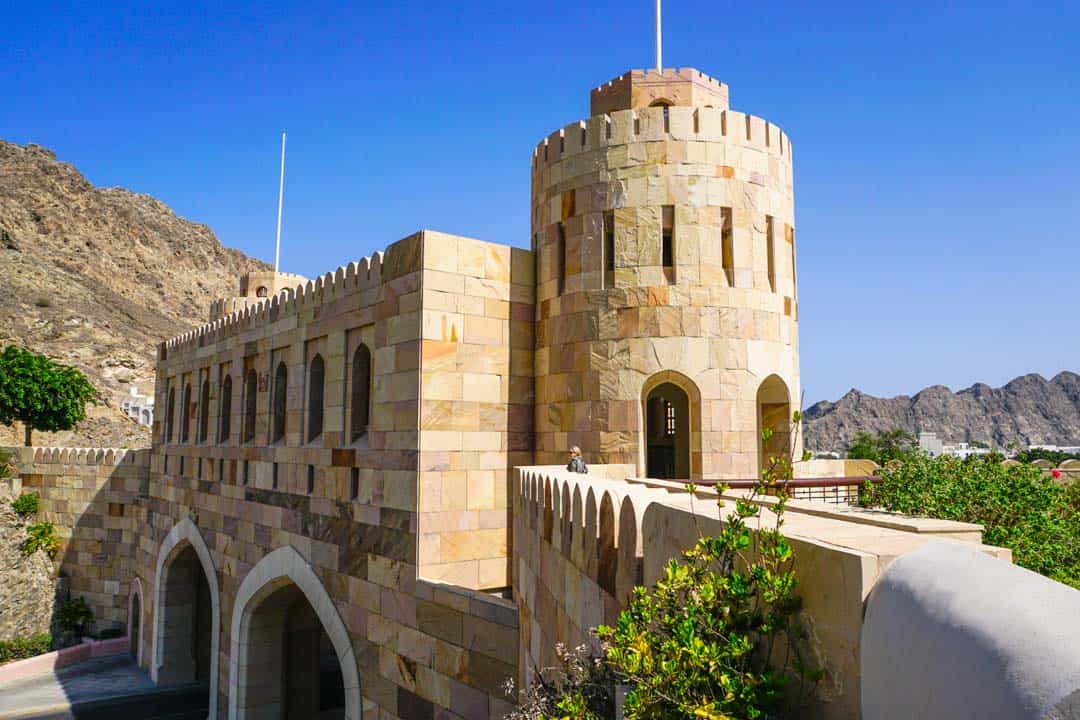
Muscat Gate Museum is a tiny gallery exploring Oman’s history. As Muscat attractions go, this one won’t rock your world, although there are some interesting exhibits on the country’s clever systems for managing water in a parched environment.
But the unusual building straddling Al Bahri Road marks the original, 17th-century city gateway and walls, so it’s a fitting spot to start our tour of Old Muscat.
From the museum, wander down to Bait Al Zubair Museum. This oasis is one of the best things to do in Muscat: a beautiful traditional Omani home, restored and reopened as a private collection of Omani culture and artefacts, from weaponry to furnishings and costumes.
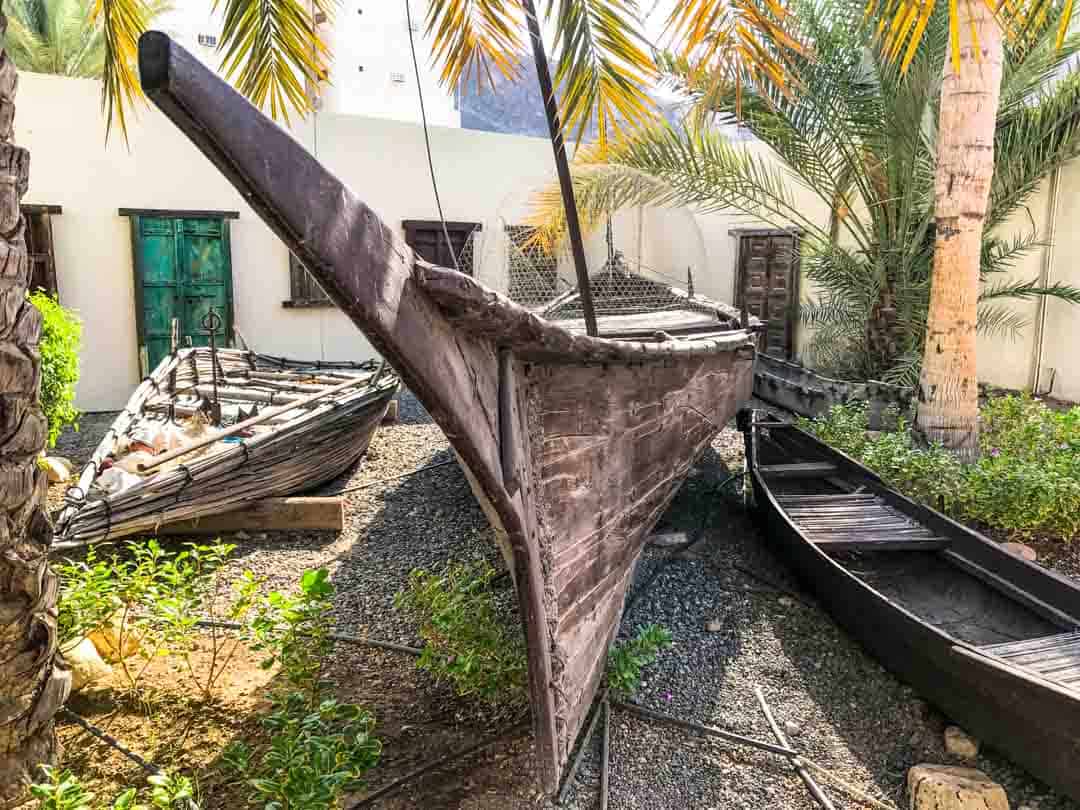
There’s also a contemporary art gallery and a café on site. It’s easy to while away the time here. When we finally sat down to a steaming cup of Omani coffee and dates, we realised we’d lingered much longer than anticipated.
Top Tip: Look out for the wind tower in the café space, a traditional means of cooling homes in this scorching landscape.
If you’re road tripping Oman, you’ll notice these rectangular wind towers on top of homes right around the country.
As a result, we decided to leave our next planned stop, the National Museum, for another visit. Depending on how you’re travelling though, this sweeping, modern gallery is by all accounts an excellent and engaging introduction to Oman’s long and epic history and culture.
Alternatively, you could check out the nearby Omani-French Museum, a niche option that explores the historical relationship between Oman and France.
A 10-minute stroll from Bait Al Zubair brings you to the gates of Al Alam, the ceremonial palace of Oman’s king, Sultan Qaboos.
While the Sultan’s palace isn’t open to the public, you can take pics of the elegant blue and gold facade from the front gate. If you have time, head back here at night to see the palace lit up.
To the left of the front gate, a side street goes to the harbour, passing between the palace and the 16th-century Portuguese Al Mirani Fort.
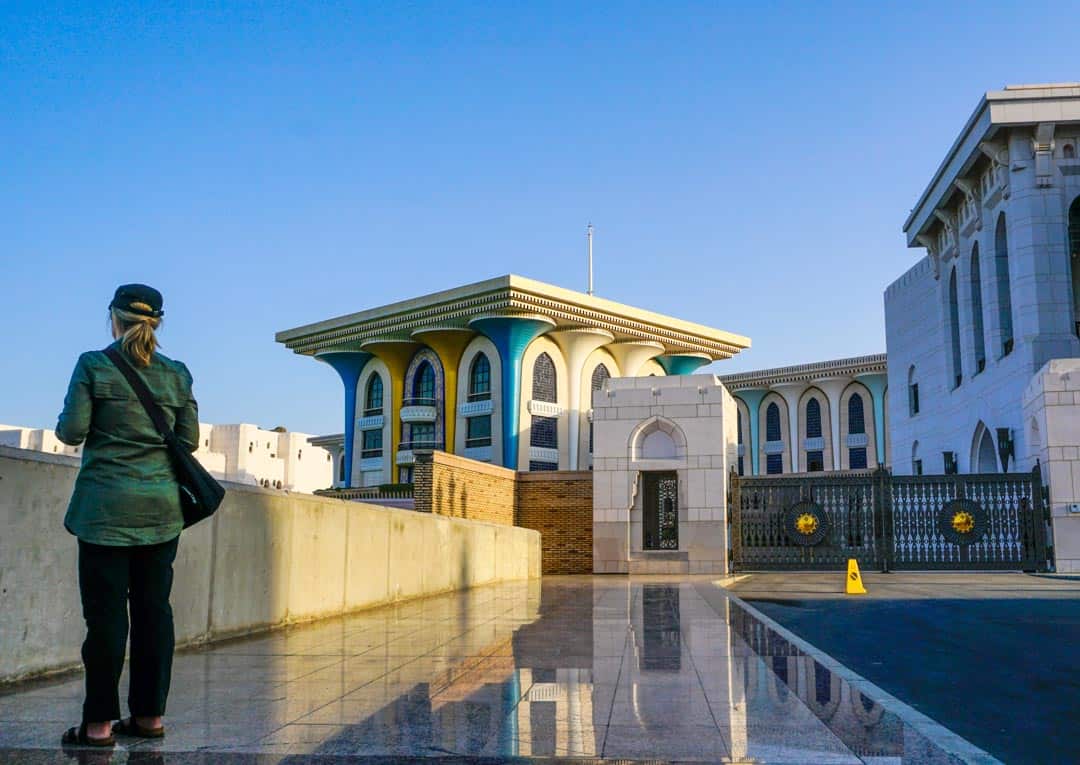
Make your way down here and spend some time taking in the columned palace from this angle, as well as Al Jalali Fort across the water (neither Al Mirani nor Al Jalali forts are generally accessible to the public, although with some planning, you can apply for a permit to visit Al Jalali).

As the afternoon rolls on, it’s time to start making the slow walk back to Mutrah, along the famous Mutrah Corniche.
More and more locals will start emerging as the temps cool, making the Corniche a lively place to wander in the late afternoon and early evening.
En route, you’ll come to Kalbuh Park, a pretty waterside spot that’s popular with young families and couples. We hung out here until the lights of the Corniche came on and the sky over the mountains behind Muscat turned orange.
You can continue your Corniche amble all the way back to Mutrah as we did, or flag a cab for the final leg.
There are lots of options for dinner in Mutrah. We were keen for some authentic Omani fare, so we made our way to popular Bait Al Luban.
There, we feasted on barbecued skewers called Mishkaks, a flavour-filled firepit-cooked meat dish called Shuwa, and a delicious Omani chicken curry called Saloonat Dijaj.

Day 2 – Wander Through Buzzing Mutrah
For our second day in Muscat, we’re staying local and exploring the traditional trading hub of Mutrah.
The busy town is famous for its market, as well as twilight wanders along the Corniche. But there are also a handful of other attractions worth checking out among the traditional merchant homes.
Start your day at the Mutrah Fish Market, at the western end of the Corniche. If you’re early enough, you’ll find Muscat’s fisherman offloading the day’s catch from their colourful dhows.

Inside the spanking new fish market building, locals haggle over rows of ice-packed stainless steel trays piled high with fresh seafood, as wiley cats watch on hopefully.
We’re told all that gleaming new chrome doesn’t have quite the same character as the fishy old market, but it’s still interesting to watch the action.
Just down the road, the vendors of Mutrah Souq are rolling up their shutters for the morning market.
We visited the souq both in the morning and in the evening, and found it to be much livelier at night, so we’d recommend leaving the labyrinthine passageways until tonight.
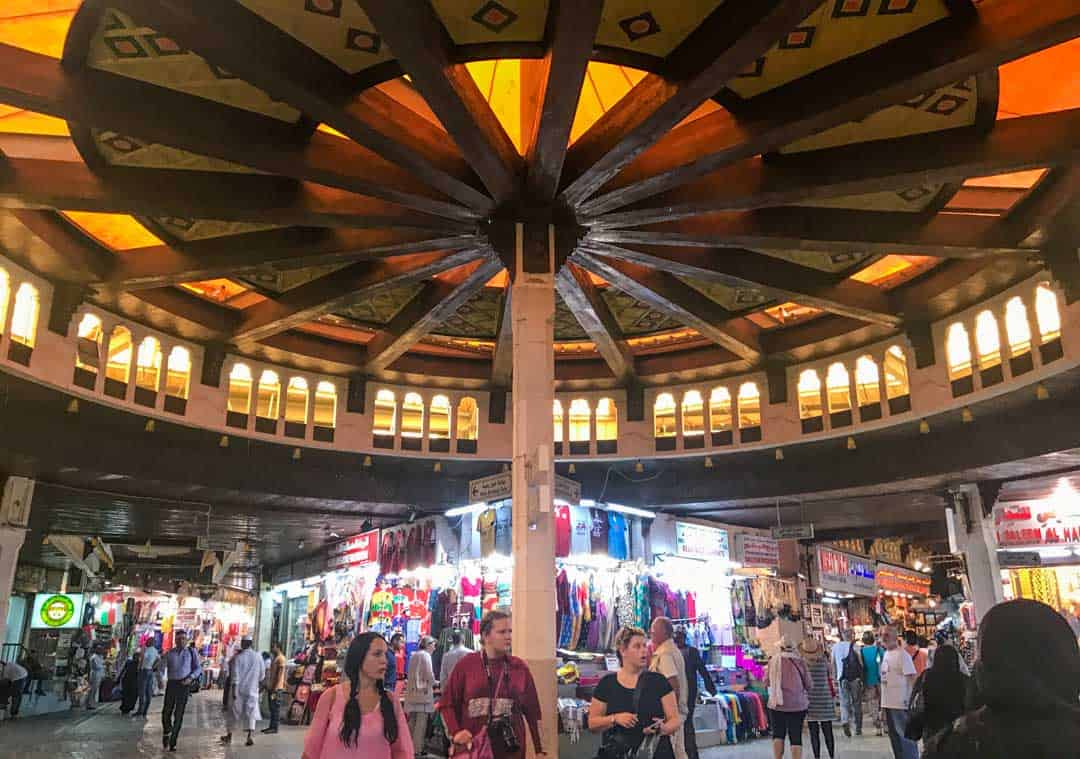
Take the opportunity though, to have a gander at the glittering treasures of the Gold Souq while it’s still relatively quiet, before continuing on along the Corniche and past the imposing 16th-century Mutrah Fort (it’s not open to the public unfortunately).
Just past the fort, you’ll come across the Ghalya Museum of Modern Art. This charming and quirky little traditional home weaves a maze through the rooms and memorabilia of one family’s personal story. The wander winds up in a small gallery of contemporary artworks.
By now the heat will have well and truly settled, so take the opportunity to lunch indoors or head to one of Mutrah’s museums, like the impressive Sultan’s Armed Forces Museum or the folksy Bait Al Baranda.
When the temps start to cool, it’s time to get back out on the Corniche and wander down to Reyani Park with the locals.
Climb up the Riyam Park Monument, affectionately known as the ‘incense burner’, for sunset views over Mutrah, the mountains and the seafront.

Grab dinner at one of the open air restaurants on Mutrah Corniche tonight. We opted for simple but tasty plates of shwarma and glasses of spicy lime juice.
Juice Nation: While a cold beer might feel like just the ticket at the end of a hot day exploring Muscat, you won’t find booze on most menus: it’s against the law to drink or be drunk in public in Oman (check your country’s travel advice for more detail on this).
The silver lining is that, in addition to amazing Omani coffee and delicious tea, fresh fruit juices are king here.
Our absolute favourite bevvie in Muscat was a fresh lime juice spiced with blended jalapeños. We stopped to sip it and people watch pretty much every day at the Fast Food N’ Juice Centre next to Mutrah Souq.
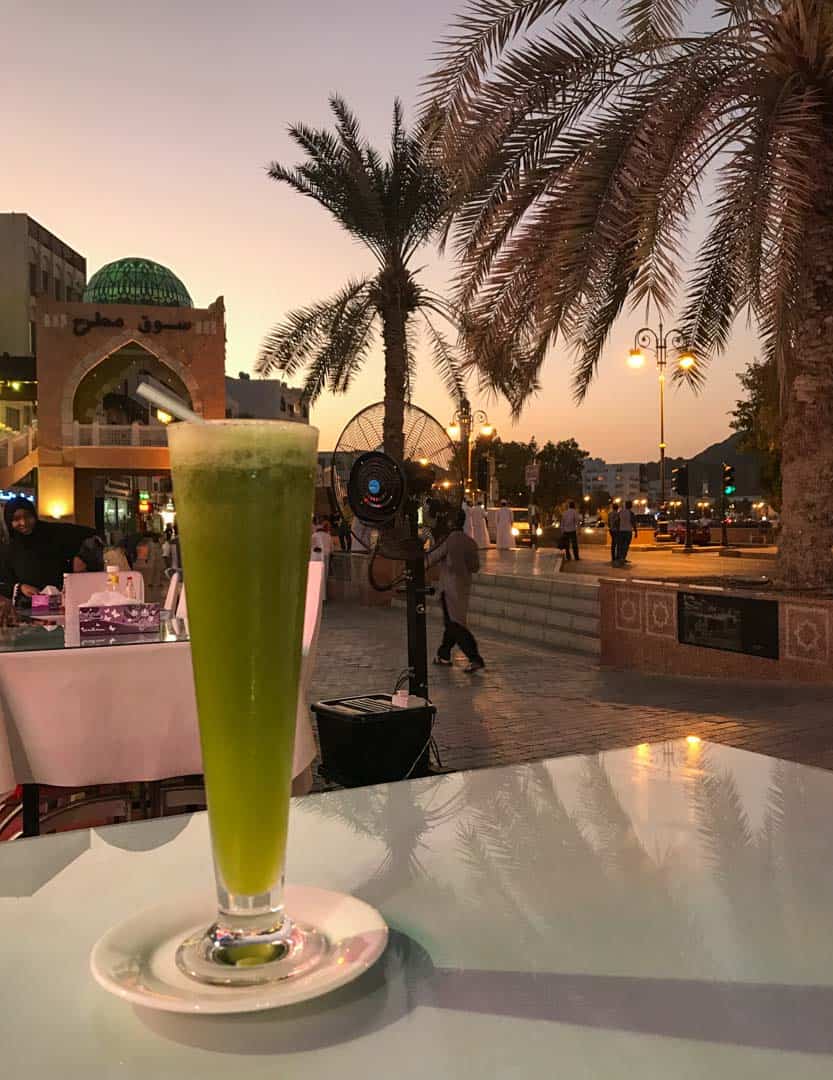
Day 3 – Visit Sultan Qaboos Grand Mosque and Enjoy A Sunset Dhow Cruise
An absolute must-see on any Muscat itinerary is the Sultan Qaboos Grand Mosque.
Located around 25-kilometres to the west of Mutrah, this is Oman’s principal mosque: a vast and exquisitely decorated sandstone building set within lush gardens and surrounded by tiled arcades.
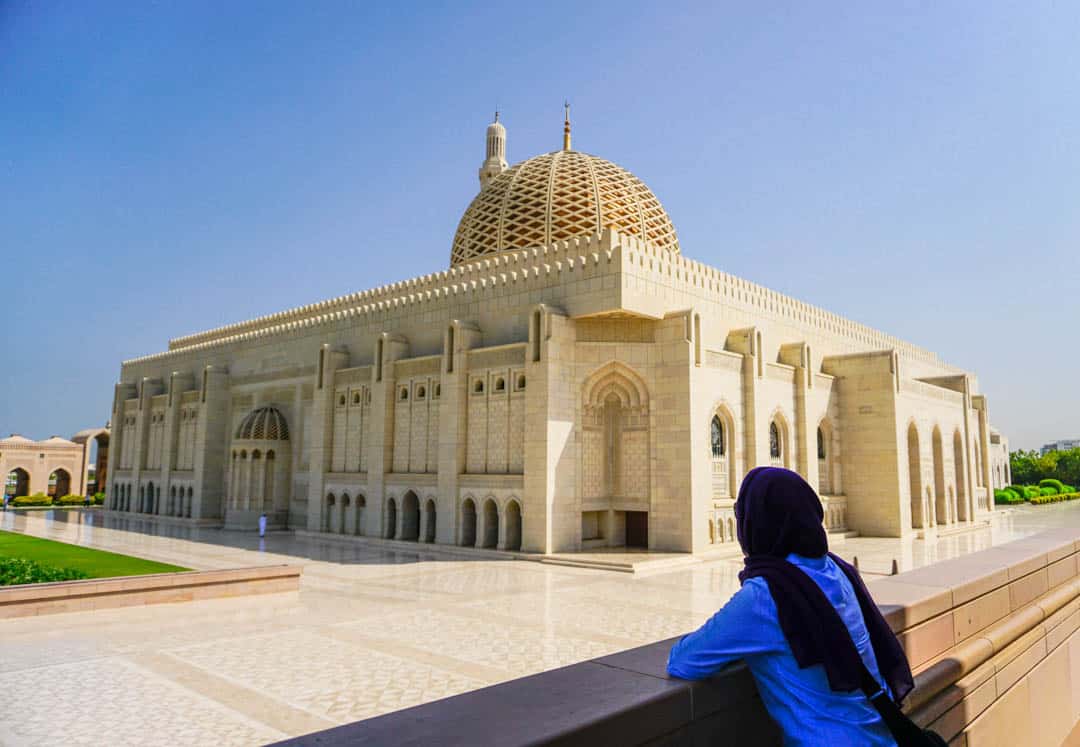
Commissioned by Sultan Qaboos in the 1990s, the mosque’s various spaces can accommodate up to 20,000 worshippers at a time (you’ll notice hundreds and hundreds of shelves in the arcades all over the grounds, where shoes are deposited before entering the mosque).
Sultan Qaboos Grand Mosque is an active house of worship, so it’s only open for visitors between 8am and 11am each morning, and it’s closed on Fridays.
Take a cab from Mutrah to the mosque in time for opening, and aim to spend a couple of hours here.
Culture Spotting: As you travel to Sultan Qaboos Grand Mosque from Mutrah or Old Muscat, keep an eye out for the beautiful Islamic-Italianate-style Royal Opera House on your right.
The Opera House has a calendar of events year-round, so if you have an evening free while you’re visiting Muscat, maybe check out what’s on.
The highlight of Sultan Qaboos Grand Mosque is hands down the ornate interior of the main musalla (prayer hall), and its delicately tiled mihrab (a wall niche indicating the direction of Mecca).
The magnificent Persian carpet here was once the world’s largest. Likewise, the 8.5-tonne crystal chandelier suspended from the beautiful dome above.
Both titles were recently conceded to the Shaikh Zayed Grand Mosque in Abu Dhabi; a fact that takes nothing away from these extraordinary handcrafted creations.
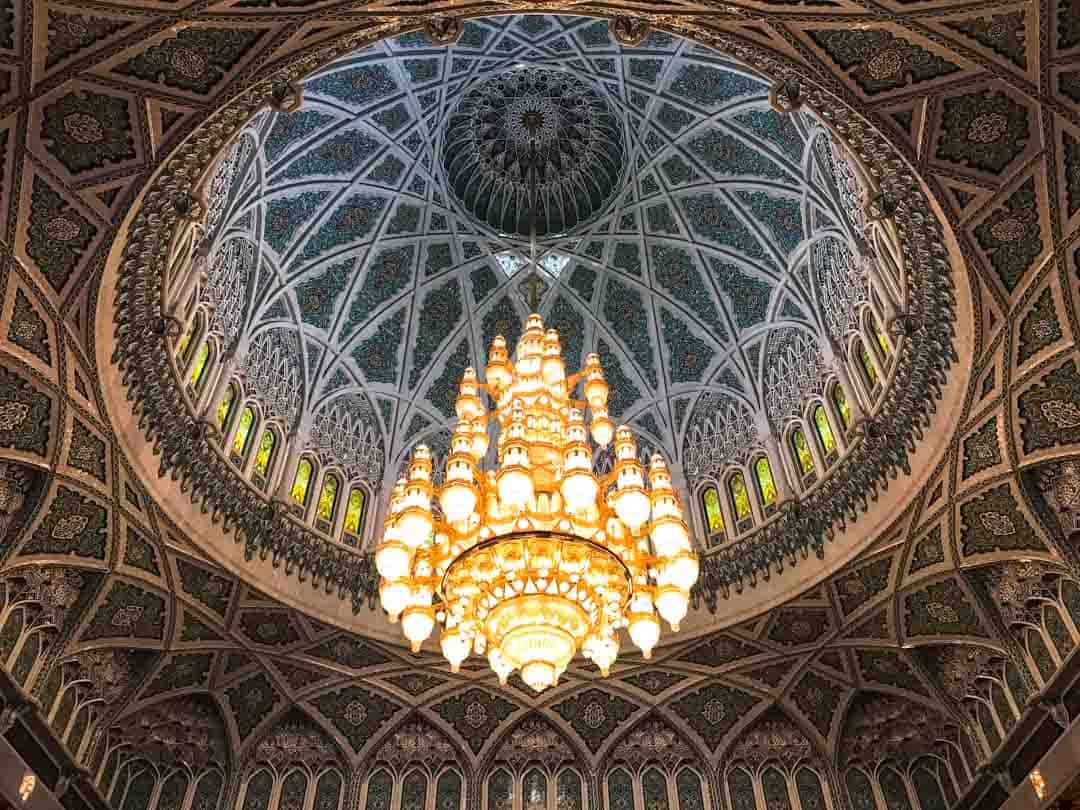
Back outside, take the opportunity to wander the beautiful courtyards of the mosque.
The arcades surrounding the main building are decorated with tiled niches showcasing the evolution and diversity of zellij – mosaic tilework – from across the Middle East (there are small plaques in English explaining the origins and history of the tilework in each arcade).
Dressing for the mosque:Oman is a conservative country and while tourists are given a bit of leeway when it comes to what we wear, it’s respectful to take a cue from the locals and dress appropriately.
For women, this means not wearing tight or revealing clothing generally, but especially when it comes to visiting mosques.
Wear loose, airy clothing (it’s better in the heat anyway), and bring a scarf, as you will also be required to cover your hair. Guys should cover their knees and shoulders. Everyone must remove their shoes before entering the mosque.
We’ve written in more detail about what to wear in our post on planning a trip to Oman.
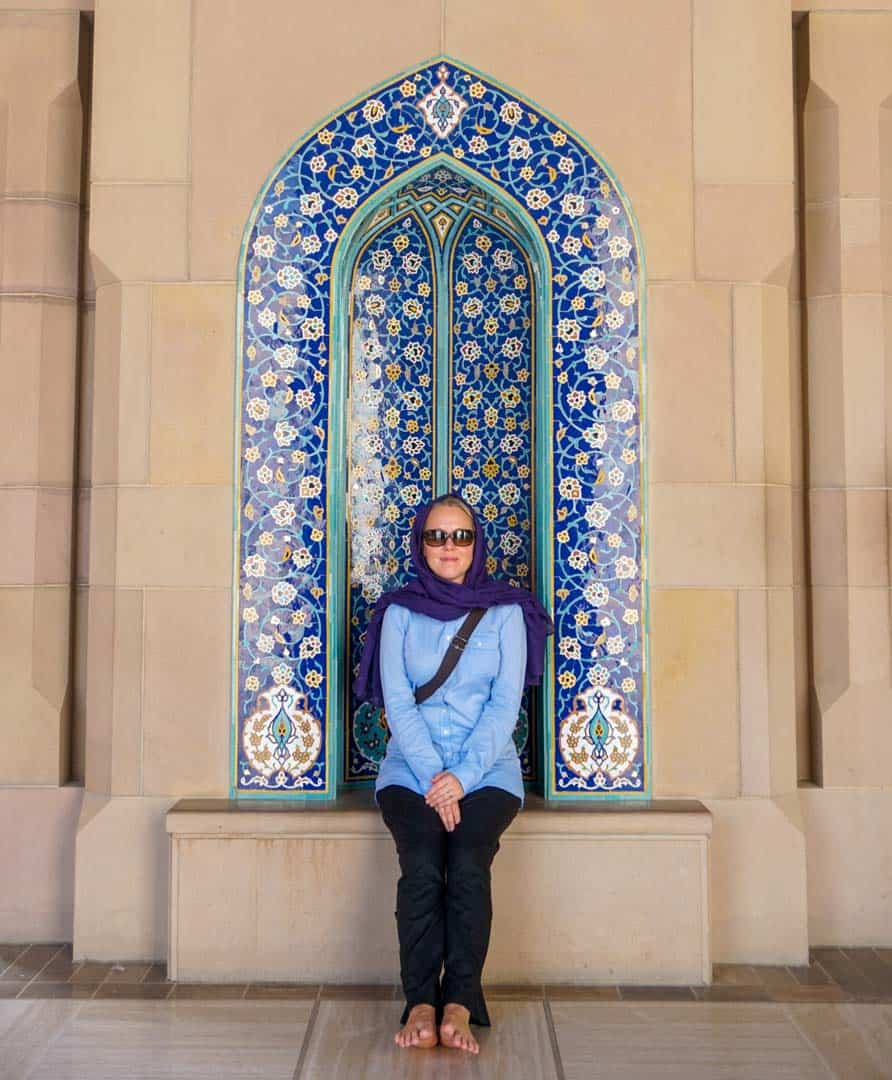
With the sun approaching its zenith, it’s time to head indoors for a couple of hours. If you’d like to stay local, the Natural History Museum is a short cab ride away. Or maybe find a good spot for lunch.
We had already organised through our hotel to join a sunset dhow cruise in the late afternoon on Day 3, including transfers from our hotel. So we made our way back to Mutrah to chill out until the sun started to drop.
History spotting: If your sunset dhow cruise departs from Marina Bandar Al Rowdha south-east of Old Muscat, you may pass the historic dhow boat – the Sohar – en route.
The Sohar is a replica of a dhow that was built and sailed 6,000 nautical miles from Oman to China, by a sailor named Abdullah Bin Gasm, more than 1,200 years ago!
This version, which is permanently dry-docked in the middle of the Al Bustan Palace roundabout, was commissioned for a reenactment of the epic sea voyage in 1980.
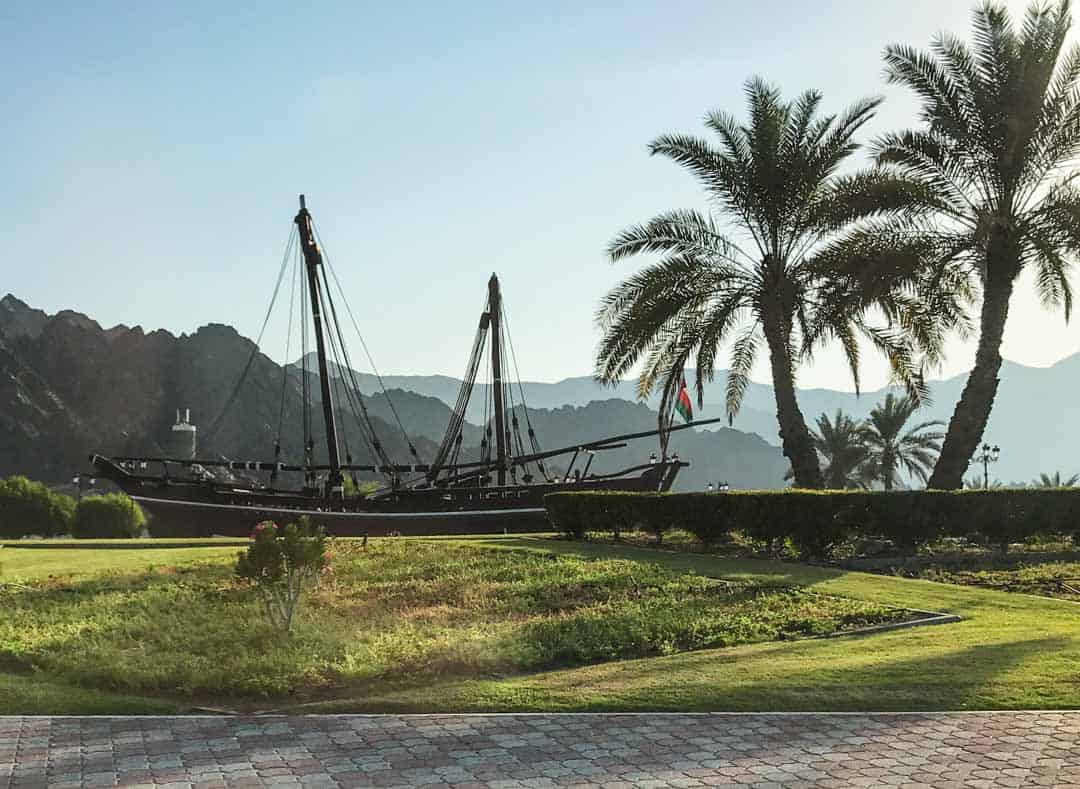
It was still scorching hot when our beautiful dhow boat set off in the late afternoon from Marina Banda Al Rowdha, to cruise along the coastline along Old Muscat and Mutrah.
But with the sun dropping behind the Al Hajar mountains, and the sky turning molten gold, we reckon this is the perfect way to wind up an awesome 3-day Muscat itinerary.

Finish up your Muscat sightseeing tonight with a final Omani meal. We cheated and returned to Bait Al Luban, but for alternatives, check out this post over at Migrationology on recommended eats in Muscat for food lovers.
Got More Time To Explore Muscat & Surrounds?
With an extra day or two in Muscat, we recommend getting out on the water again for some scuba diving and/or dolphin watching (whale watching is also possible in season).
Oman is home to a handful of outstanding dive locations, including the World Heritage Daminiyat Islands, and the reefs and wrecks of Bandar Kharyan just south of Old Muscat, where we spent a day beneath the waves with Extra Divers Qantab.
Want to know what its like to go scuba diving in Oman? Read about our experience here.
With even more time, you could hire a car and explore some of the nearby highlights of Oman’s northeast on day trips from Muscat, like stunning Wadi Shab or historic Nizwa.
Check out our 2-week self-guided road trip itinerary for Oman for our suggestions on where to visit and what to do with a fortnight in this amazing country.

Good To Know
Getting there and away: Muscat International Airport (which used to be called Seeb International Airport) is located around 30km from the Old City. We arranged a transfer from the airport to our hotel in Mutrah for around OMR12.
It’s also a fairly straightforward journey to get to Muscat overland from Dubai in the neighbouring United Arab Emirates, but this will take the better part of a day and bus tickets can only be bought on the ground.
Getting around: Muscat edges the Gulf of Oman for some 50km. With limited public transport, that means the easiest way to get around is to hire a car, or hire a car and driver, or flag cabs for rides around the city.
If you’re keen on doing day trips from Muscat, you can also arrange for a car and driver in most hotels, and taxi drivers will also offer private trips and tours just about anywhere.
Where to stay in Muscat: There are plenty of accommodation options across Muscat, from simple hotels in Mutrah to high-end beach resorts in the city’s west. We tried both, with our costs ranging from around US$50 to US$150 for double rooms with ensuite. Accommodation in Muscat is easily booked online through the mainstream booking engines.
For tips and advice on prepping for and travelling in Oman, including more detail on getting around and accommodation, check out our planning post.
We hope you found our Muscat itinerary helpful! If you want to know more about visiting this beautiful corner of the Middle East, head over to our Oman page for all of our Oman travel blog posts.
And if you’ve got any questions or comments about this post, we’d love to hear from you, just pop your thoughts in the comments box below!

I’m looking forward to visit Muscat soon , one of the smost beautiful cities in the Middle East, I’m told !
Hi han mu kang, it most definitely is a beautiful place to visit – we hope you have a wonderful time! Thanks for checking out our post!